12×24 tiles are an extremely popular large-format tile size. However, working with them may be a little different than what you are used to.
This post is going to cover some basics on:
- 12×24 tile patterns and offsets
- Grout joint size
- Cutting
- and much more!
Estimated reading time: 8 minutes
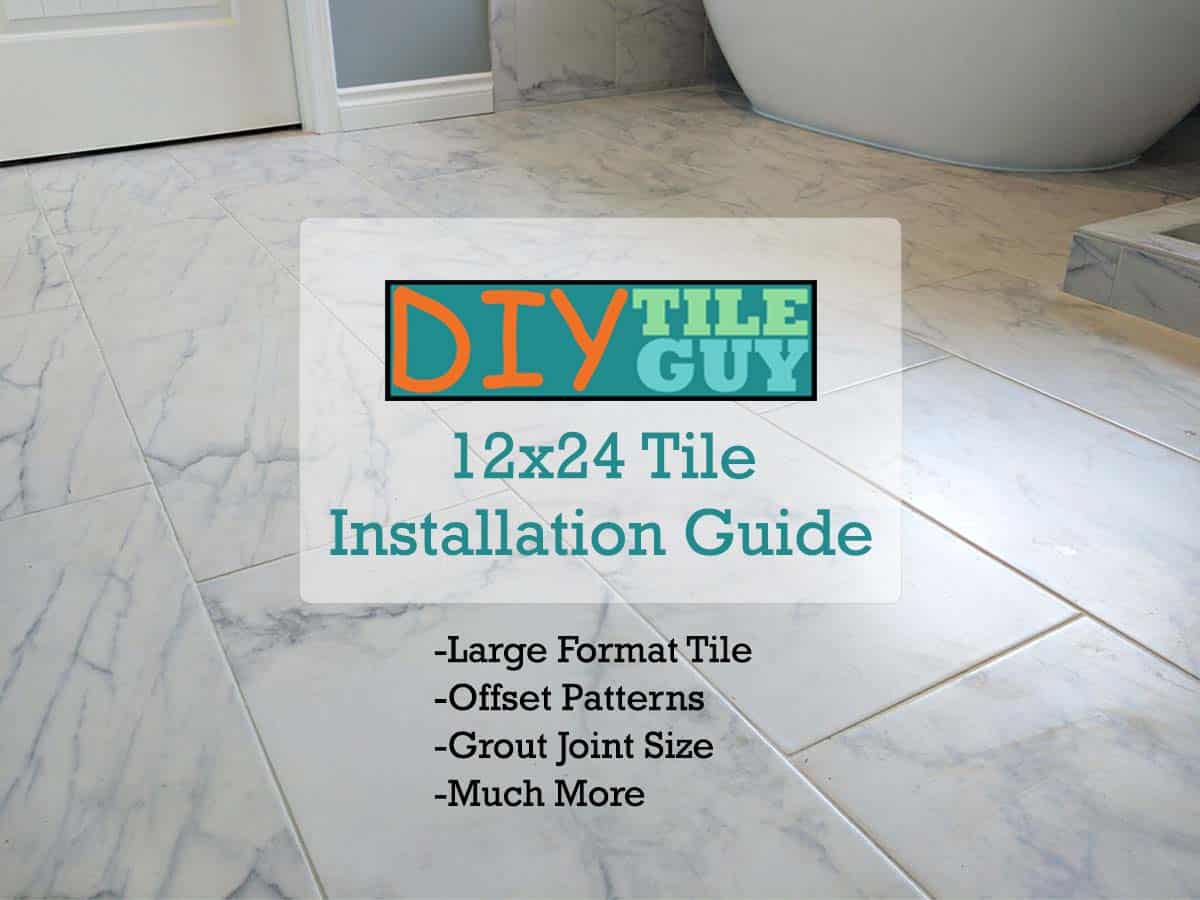
Actual Size of 12×24 Tiles
For starters, we need to clear up a common misunderstanding. 12×24 tiles are not twelve inches wide, nor are they twenty-four inches long.
In fact, the vast majority of “12×24” tiles are measured using the metric system, which almost the whole rest of the world uses.
Therefore, the metric measurements are 30cm x 60cm. This converts to 11 13/16ths x 23 5/8 inches. Most, but not all, 12×24 tiles on the market will be this size.
12×24 Tile Patterns
All large format tiles (large hexagon tiles are one exception) can be installed in a straight-lay pattern where the edges all match up.
However, with rectangular tiles, such as 12×24’s, it’s quite common to install them in an offset pattern.
But a word of caution: tile industry standards and many manufacturers recommend against a 50% offset pattern. [1,3]
Why? I’ve talked before about why a 50% offset is a bad idea and why you want to install your 12×24 tiles with a 33% offset instead. It has to do with the tile warpage that a lot of these big 12×24 tiles have.
So, check out the other post to learn more, but the following two images are examples of a 33% offset tile pattern.
33% stairstep offset pattern
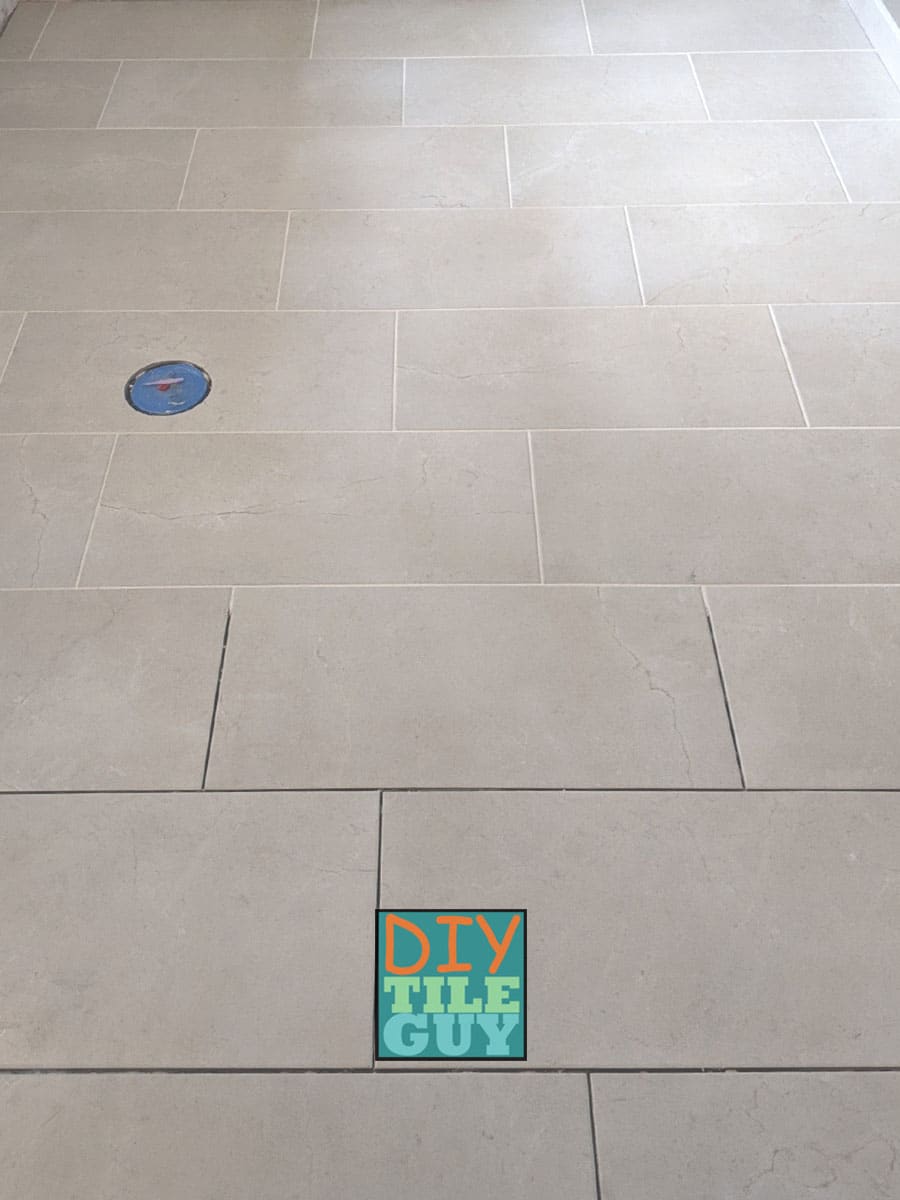
33% zipper offset tile pattern
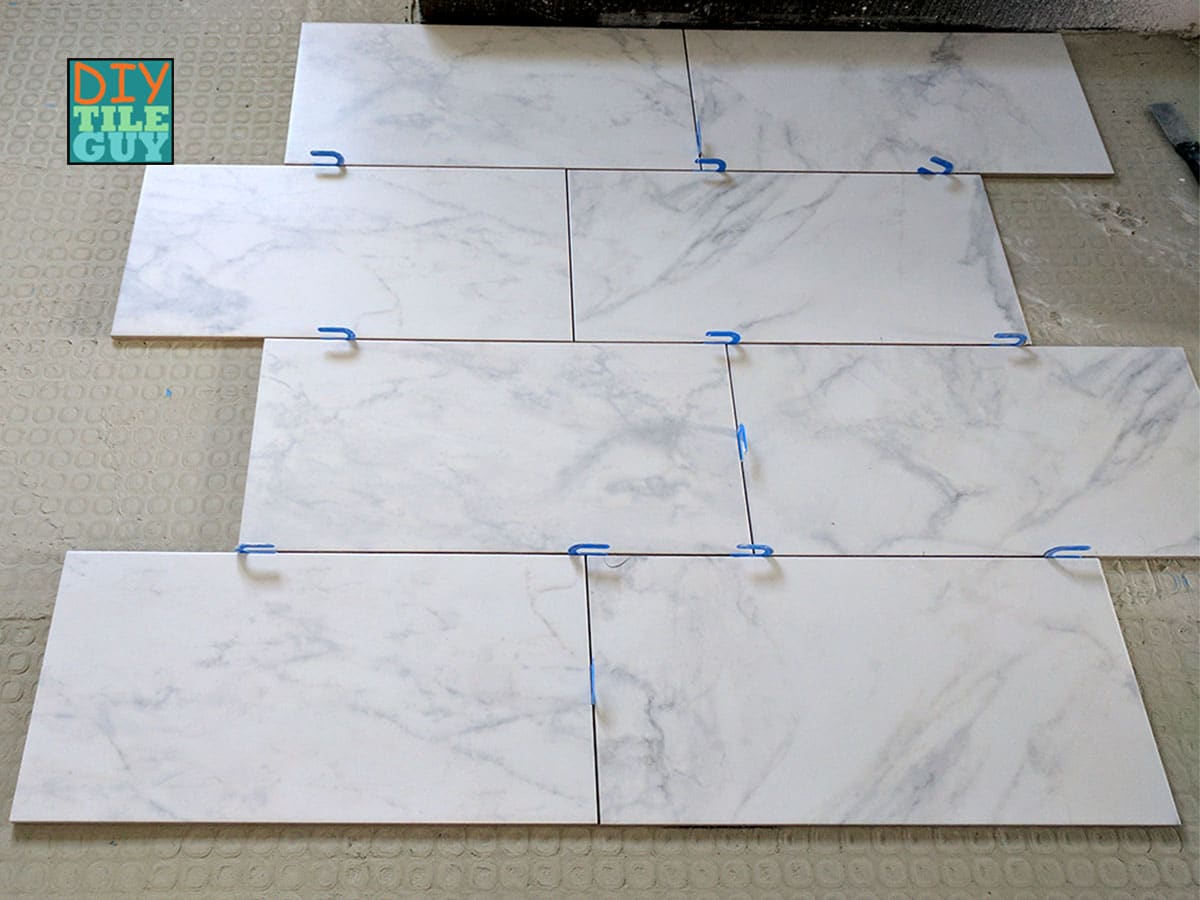
You can also install tiles in a random tile pattern and have them honor the 33% maximum offset rule of thumb.
Should rectangular tiles be oriented vertical or horizontal?
Whether to install tiles vertically or horizontally is a design decision. However, in general:
Horizontal tile orientations are:
- more of a traditional look
- can make a space look larger or wider, whereas
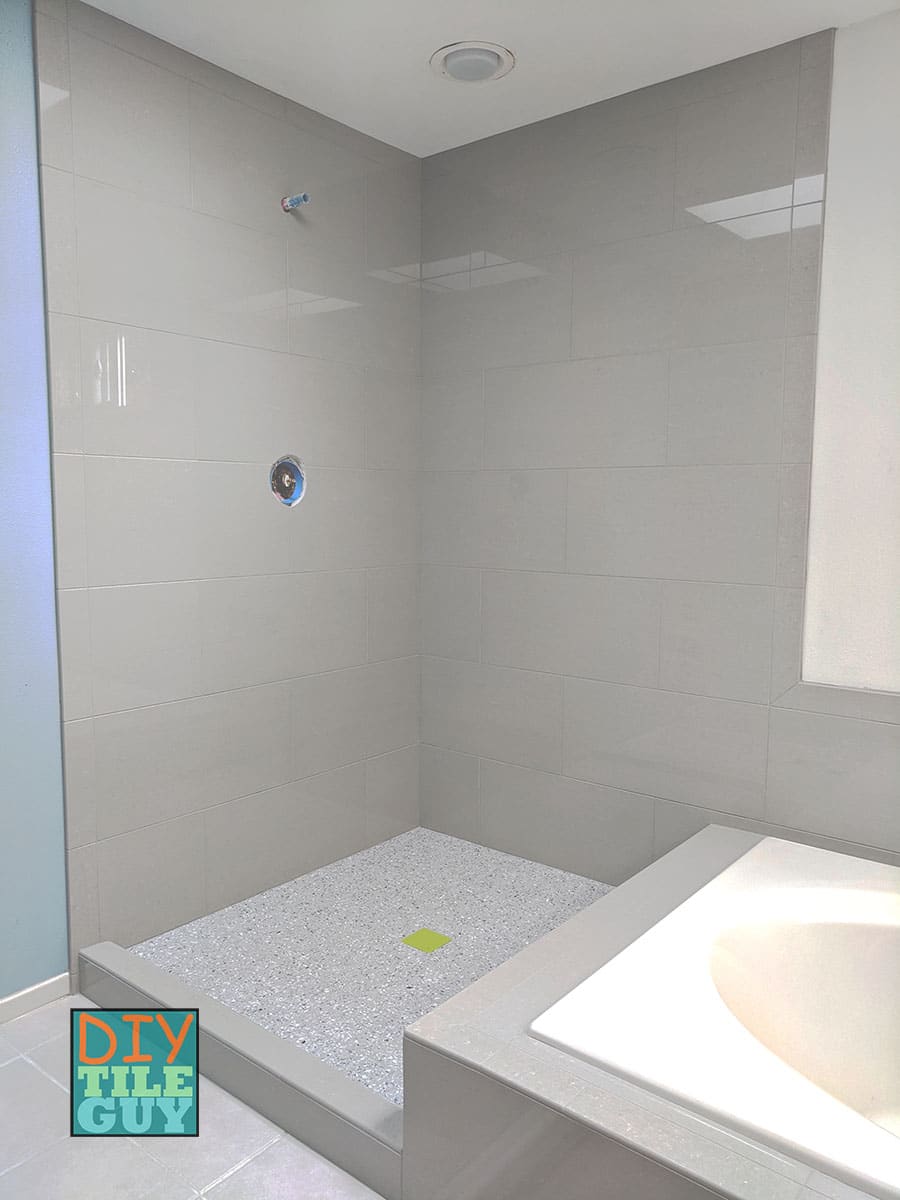
Vertical 12×24 tile orientations:
- can be more of a modern look
- can make a space look longer or taller
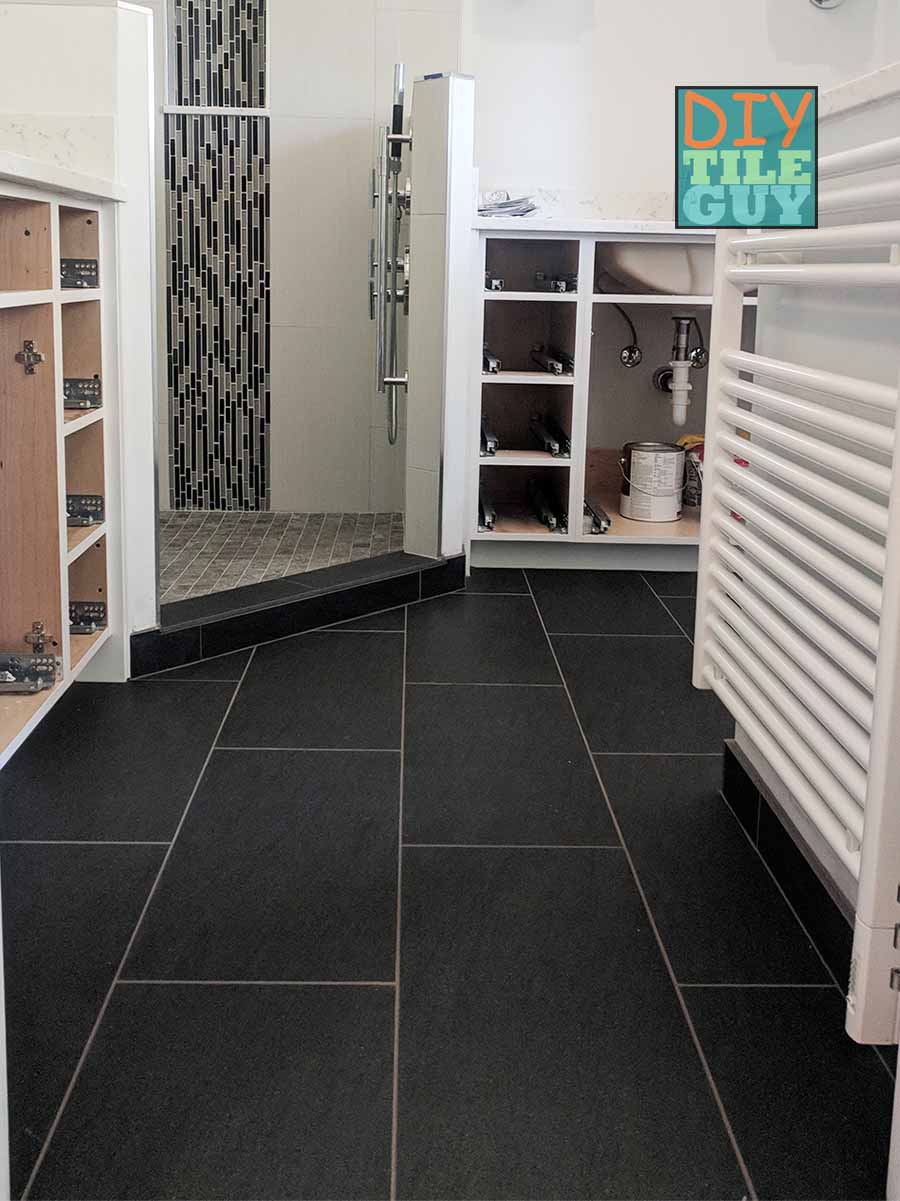
So, the proper orientation will depend on your room and the look that you want to achieve.
Are 50% offset tile patterns allowed?
Ok. But I really want my 12×24 tiles installed with a 50% offset
If you understand the risks and the difficulties of why a 50% offset is not recommended, then here’s what to do:
Make a small mockup with the tile at a 50% offset. Then, grout this mockup. If you, the end user, are OK with what you see, then it’s OK to proceed with a 50% offset.
Remember, there are two ways to lay out a 50% offset, and most only know one of the ways.
12×24 tile grout joint size
There is a complicated formula for calculating the correct grout joint size for your tile. But to keep things simple, your grout joint should be in the range of 1/8-1/4 inch for many of the 12×24 tile installations. [2,3]
Best thinset mortar for large format tiles
Your choice of thinset is important for 12×24 tiles. You want to make sure that you choose a modified mortar meeting ANSI A118.4. [3]
Additionally, look for words like medium bed, LFT, LHT, or simply “large tile” on the bag. Make sure to mix your mortar properly and follow my tips for small batch mixing as well.
Finally, selecting the correct trowel size is critical to achieving proper mortar coverage.
Floor Flatness for 12×24 tiles
Bigger tiles require flatter floors. Tile industry standards say that your floor should not deviate more than 1/8 inch in 10 feet for large format tile. [3]
Since most floors aren’t that flat, you will have to do some extra work to get it flat enough before you install your tile underlayment.
Self-leveling a floor for tile is one way to help flatten it. You can also watch my YouTube video, which shows an alternate technique for flattening floors. This one is better if you are spot-patching.
The flatter your floor is, the easier it will be to tile over it.
Tile Leveling Clips for Large Format Tiles
I recommend using tile leveling systems for installing 12×24 tiles and larger.
Leveling clips don’t get you out of flattening your floor. They aren’t a shortcut for some other step.
But they can help with the installation, and they may even help bend the tiles slightly. Look into using them. I’ve been surprised by how much I’ve come to rely on tile leveling systems for my installs.
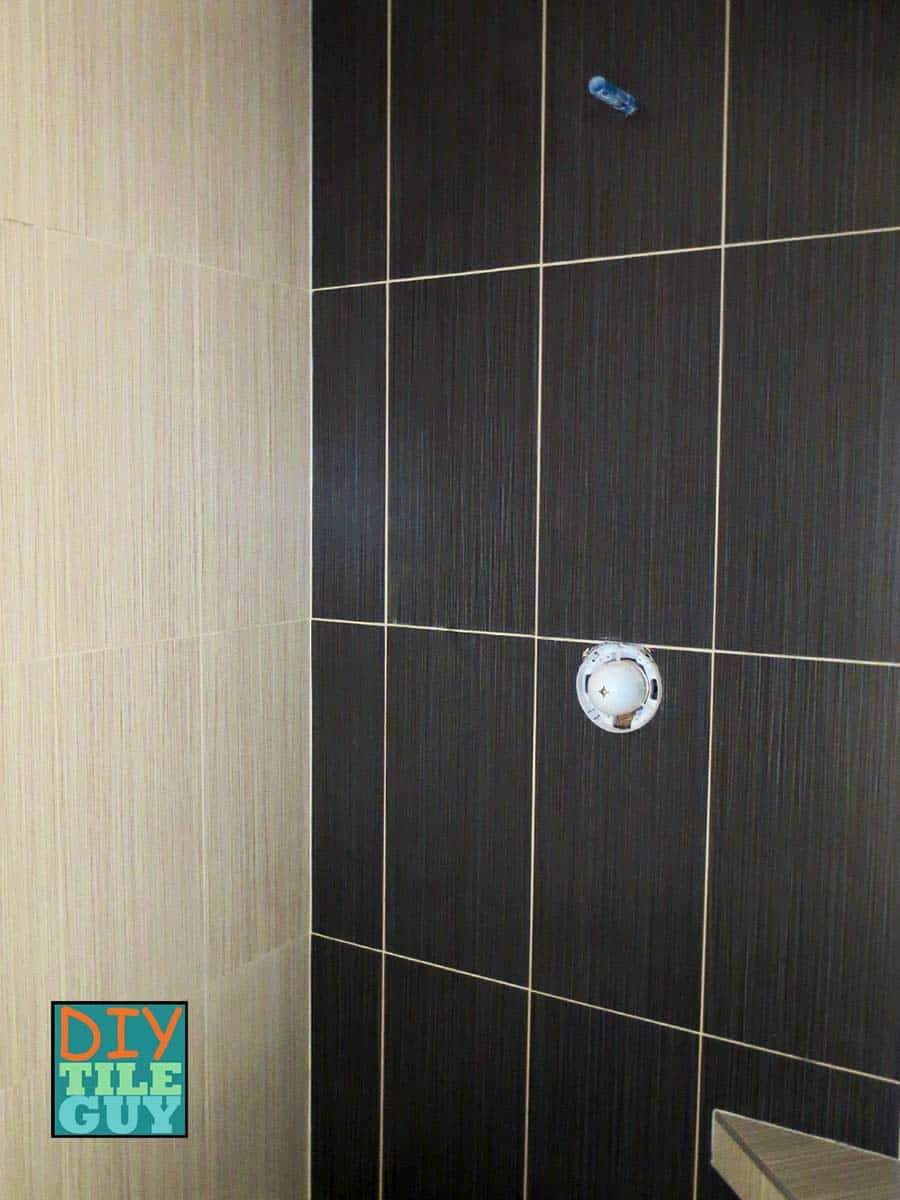
How to cut 12×24 tiles?
You pretty much need an electric tile saw to cut large-format tile cutters.
Manual score & snap cutters
These types of cutters will cut hard, thick porcelain tiles, but you have to buy one of the really expensive versions.
The kind you see at the box stores don’t stand a chance. Further, if you need to cut notches or trim a little off the end, the manual cutters won’t perform those tasks.
Handheld Electric Grinder for Cutting Porcelain Tiles
Handheld electric grinders with diamond blades work well for cutting 12×24 tiles. Some cuts, such as round holes, will cut much easier with this type of tool.
While it’s a nice tool to have, they require that whoever is using them has some competence with tools. So, this is where you have to rate your own skills. It’s also why I think a tile saw is more predictable.
Cutting 12×24 tiles with wet saws
Wet tile saws are going to be your best bet for being able to consistently and predictably cut large format tiles. And, they are the most expensive too.
For cutting 12×24 tiles, you’ll want one that cuts 24 inches long. The Dewalt D-24000 is a tile setter’s favorite. Also, I reviewed the less expensive Delta tile saw in 2020. I still use this saw today. Finally, Harbor Freight has a 24-inch saw that gets good reviews.
One additional option is to purchase the cheaper tabletop saws that home improvement stores carry. I don’t have a lot of experience with these saws, but they can be useful for longer tiles, especially porcelain plank tiles.
Is there more waste with larger tiles?
Yes, there is definitely going to be more waste with bigger tiles. Generally, you’ll want to order 10-20% extra to have on hand.
This post covers how to calculate square footage with 12×24 tiles.
FAQ about large format tiles
Yes, any tile that measures 15-inches or longer in at least one direction is considered to be a large format tile. This includes 12×24, 6×24, 16×16, 24×24, 24×48, and many other sizes. [3]
Yes, 12×24 tiles are very commonly installed in bathrooms of all sizes.
A trowel with 1/4 x 1/2 inch U-notch trowel would be a good choice for 12×24 and other large format tiles.
See why the 1/2 x 1/2 inch square notch trowel is no longer recommended for use.
Large-format tiles can be used on shower floors, including curbless showers. Typically, these are used in conjunction with a linear drain or are “envelope cut” to slope toward a center drain.
One thing to keep in mind is that slip resistance is a primary consideration.
Although Dynamic Coefficient of Friction (DCOF) ratings don’t apply to shower floors, some manufacturers will list their tiles as OK choices for shower floors and other sloped wet areas. [4]
Larger tiles are more difficult to handle, take longer to cut, and take more time to install. Therefore, they will be a more expensive choice than smaller format tiles.
References
- https://www.tileletter.com/why-do-manufacturers-require-a-33-offset-brick-pattern/
- https://www.tcnatile.com/images/pdfs/Rectangular%20Tiles%20-%20How%20to%20Offset%20Certain%20Installation%20Challenges.pdf
- https://www.custombuildingproducts.com/wp-content/uploads/2021/08/lft_faq.pdf
- https://www.daltile.com/how-to/how-to-choose-the-right-tile/floor-tile